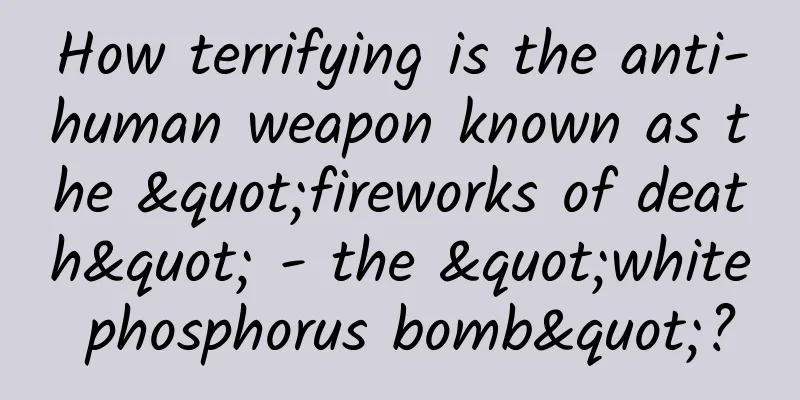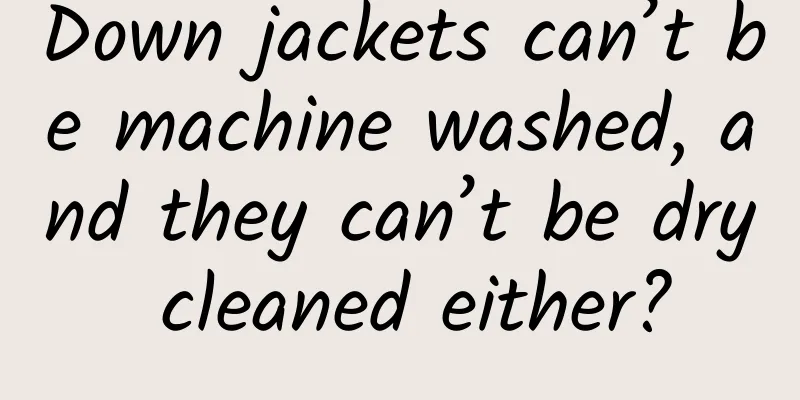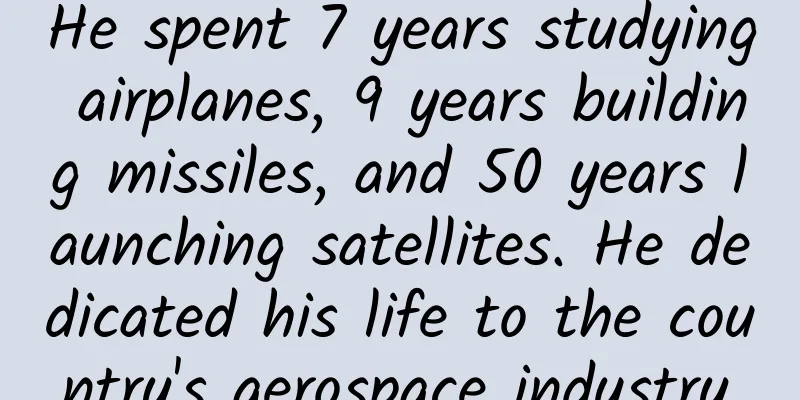How terrifying is the anti-human weapon known as the "fireworks of death" - the "white phosphorus bomb"?

|
When the white phosphorus bomb is dropped, a cloud of flames will form, and all living things within a radius of 150 meters will be burned. Once it comes into contact with the human body, it may cause serious burns. "The bodies and clothes of the injured are burning, and their skin is gradually melting," and only bones are left. White phosphorus bombs can be described as the "Samadhi True Fire" in reality. Image source: new.qq.com Recently, the Palestinian-Israeli conflict has intensified, resulting in the loss of thousands of lives and the displacement of tens of thousands of people, and is showing a trend of expansion. The "death fireworks" banned by international conventions - white phosphorus bombs, have once again come into people's attention. Image source: sputnikglobe.com So what is the white phosphorus bomb, and why is it so terrifying that it is banned from use by international conventions? Image source: sohu.com Let's start with phosphorus. When you lightly strike a match on a matchbox, it will burn. If you have studied chemistry, you should know that the main component of a match head is phosphorus, or more precisely, red phosphorus - this is the phosphorus we often come into contact with in our daily lives. Phosphorus, an extremely cheap chemical that is used in almost everything that burns today, was first extracted from human urine by an alchemist named Henning Brand. Henning Brand thought that human urine was a bit like gold in color, so maybe he could extract gold from it. Unexpectedly, he extracted phosphorus. Image source: https://baijiahao.baidu.com/s?id=1734359743196420503&wfr=spider&for=pc According to different structures and properties, phosphorus can be divided into the following main types: Red Phosphorus: Its chemical formula is P. Red phosphorus is a stable form of phosphorus in the form of red or dark red powder. Compared with white phosphorus, which will be introduced later, red phosphorus has lower chemical reactivity and is not easy to spontaneously ignite. Red phosphorus is mainly used in the production of matches, flame retardants, chemical reagents, etc. Black Phosphorus: Its chemical formula is P. Black phosphorus is a polycrystalline phosphorus element that is black in color. It has a layered structure, and there are weak van der Waals forces between the layers formed by phosphorus atoms. Black phosphorus is a semiconductor material with potential applications in the field of electronic devices. From left to right: white phosphorus, red phosphorus, purple phosphorus and black phosphorus. Image source: differencebetween.com Violet Phosphorus: Violet phosphorus is a relatively stable phosphorus element, purple or dark red in color. It is produced under high pressure and has a different structure and properties from other forms of phosphorus. Its chemical formula can be expressed as Pn, where n is the number of phosphorus atoms. Violet phosphorus has variants with different molecular weights. Several forms (allotropes) of phosphorus can be converted into each other under certain conditions. Image source: wwwchem.uwimona.edu.jm The last one is what this article focuses on - White phosphorus: Its chemical formula is P4. White phosphorus is the most common form of phosphorus, also known as yellow phosphorus. White phosphorus is a yellow-white solid at room temperature and has a garlic smell. It is toxic, with a poisonous dose of 15 mg for humans and a lethal dose of 50 mg. It is the most active molecule in the phosphorus family, with extremely strong self-ignition and a flash point of 40°C. From left to right are the structures of white phosphorus, red phosphorus, purple phosphorus and black phosphorus. Among them, the structure of white phosphorus is relatively typical, which is a regular tetrahedron, and each vertex is a phosphorus. Source: wwwchem.uwimona.edu.jm White phosphorus is used in the production of white phosphorus bombs because it is extremely flammable. When white phosphorus comes into contact with oxygen, usually between 30°C and 40°C, it will spontaneously burn and produce a bright flame. The combustion temperature of white phosphorus is very high, usually between 2500°C and 3000°C. This high temperature allows white phosphorus to ignite other combustible materials when it burns, and can even penetrate steel plates, and produce intense heat and flame effects. The combustion process produces phosphorus oxide vapor, which combines with water vapor in the air to form tiny particles and produce dense white smoke. Chemical formula of white phosphorus combustion Both phosphoric acid and metaphosphoric acid produced by the reaction can corrode the skin. Metaphosphoric acid in particular can cause burns and ulceration of tissues, destroy the cell structure and protein of the skin, and lead to the formation of trauma, ulcers and scars. Now we know that the core component of white phosphorus bombs is white phosphorus. On the basis of white phosphorus, a combustion aid called triethylaluminum (TEA) is also added. White phosphorus is already flammable, and the addition of triethylaluminum makes it even more flammable, pushing its flammability to the extreme. This allows white phosphorus bombs to burn fully even in a small space or a space with low air density, and can burn substances that are difficult to burn with ordinary combustion materials. Structure diagram of the US M825A1 155mm white phosphorus bomb Source: Reference [3] When used in war, white phosphorus bombs are usually dropped by aircraft at an altitude of 500 to 1,000 meters. When the white phosphorus bomb is dropped, the bomb fuse detonates the bomb, and the incendiary agent that explodes and scatters contains white phosphorus material. We already know that white phosphorus can self-ignite at room temperature, and it ignites thermite materials, causing violent combustion. Sticky substances are specially added to the incendiary agent, which can make the incendiary agent stick to the human body and equipment, causing the greatest killing effect. After the white phosphorus bomb explodes, it can scatter nearly a hundred orange-yellow fireballs, accompanied by a large amount of white mist. Once the chemical substances produced by the explosion come into contact with the skin, they will continue to burn violently until all human soft tissues are "melted". The smoke produced by burning white phosphorus contains toxic substances such as phosphorus oxide. Inhalation of these toxic substances may irritate and damage the respiratory system, causing symptoms such as difficulty breathing, coughing, and chest pain. In addition, the phosphorus oxide compounds in white phosphorus can also have toxic effects on other organs and systems. Image source: sohu.com In addition, the toxicity of white phosphorus may affect the reproductive system and fetal development, and is associated with an increased incidence of certain cancers. The toxic substances produced by the combustion of white phosphorus have a certain persistence: the toxic compounds in the smoke and residue can be deposited in the environment, exist for a long time and pose potential risks to humans and ecosystems. Given that white phosphorus bombs can cause great physical and psychological trauma to people, as a weapon, its use is restricted by some international conventions: Under the Third and Fourth Geneva Conventions, it is prohibited to use any weapon capable of causing unnecessary suffering or grossly inhumane treatment. This includes causing unnecessary injury or suffering to civilians and non-combatants. The use of white phosphorus may be considered a violation of this principle in some circumstances. The Convention on Cluster Munitions, adopted in 2008, also places some restrictions on the use of white phosphorus bombs. According to the convention, the use of cluster munitions that cause unnecessary harm or suffering to civilians is prohibited. Although white phosphorus bombs are not a typical form of cluster munitions, in some specific circumstances, the use of white phosphorus bombs may conflict with the provisions of the Convention on Cluster Munitions. Hague Convention III: This convention, revised in 1899 and 1907, sets out humanitarian principles and limitations in warfare. Under the second revised convention, the use of white phosphorus bombs as chemical weapons is prohibited. However, the convention does not completely ban the use of white phosphorus, as it can also be used for lighting, signaling and smoke screen purposes. Chemical Weapons Convention (CWC): This convention came into force in 1997 and aims to ban and destroy chemical weapons. White phosphorus is classified as a chemical, but under the convention, the distinction between industrial and military uses of white phosphorus is important. The convention allows countries to use white phosphorus for industrial purposes, but prohibits its use as a weapon. United Nations Convention on the Prohibition of Chemical Weapons (OPCW): This convention came into force in 1997 and aims to ban and eliminate chemical weapons. Under the convention, white phosphorus is considered a chemical weapon and is prohibited from being used to attack civilian targets or to cause unnecessary suffering. However, the use of white phosphorus is still allowed for military purposes, such as smoke screens or defensive purposes. May the world be at peace. References [1] Palestinian Foreign Ministry Accuses Israel Military of Using Ammo With White Phosphorus Prohibited by Int'l Conventions. Sputnik. October 10 2023 [2023-10-10] [2] Phosphorus: Urine, the source of life and a deadly poison - Institute of Physics, Chinese Academy of Sciences https://mp.weixin.qq.com/s/9pA3X-BWfCRaCUtSrDr93A [3] Yang Chengjun, Yin Yu. White phosphorus bomb[J]. Weaponry Knowledge, 2009 (4): 66-67. [4] Li Daguang. The banned white phosphorus bomb[J]. Encyclopedia Knowledge, 2009 (5): 63-63. [5] Liu Yongjing, Zhang Jing, Kang Lei. “White phosphorus bomb incident” makes the US military uneasy[J]. Global Military, 2005 (12S): 14-15. [6] Tao Baijiang, Sun Ke, Zeng Ding. Modern incendiary weapons and burn protection[J]. Chinese Journal of Injury and Repair: Electronic Edition, 2018, 13(3): 169-171. Author: Ji Minghua, PhD, Shanghai Advanced Research Institute, Chinese Academy of Sciences, R&D Director, Shanghai Qingrui Food Technology Co., Ltd. Editor: 91 |
<<: Root cause | Can stem cell transplantation really treat hair loss? Don’t rush to try it yet
>>: Is oxygen more refreshing than coffee? Some people tried it and found that...
Recommend
Killer whales and dolphins: Stupid humans, come in and chat for five cents?
There are many happy elves living in the vast oce...
How much does it cost to join the Liling home improvement mini program? What is the price for joining the Liling home improvement mini program?
How much does it cost to join a home improvement ...
Facebook dominates mobile! Daily active users reach 800 million
[[132525]] As Internet users around the world swi...
How much does it cost to join the Urumqi beauty mini program? Urumqi Beauty Mini Program Franchise Price Inquiry
How much does it cost to join a beauty app in Uru...
Where can I find the short video material library for self-media short video production?
As a popular platform nowadays, short video platf...
The taller you are, the higher your risk of getting these 3 diseases!
A person's height is determined by a combinat...
iOS WeChat update: The withdrawal time can be extended to three hours
Yesterday, iOS WeChat updated to version 8.0.40, ...
Dinosaurs ruled the earth for 170 million years, but they did not evolve into higher intelligent creatures. Why?
Since the Cambrian explosion, the sun and the moo...
Can SAIC, which launched the Marvel X pure electric SUV priced at 300,000 yuan, succeed in its fight against new car-making forces?
Recently, Roewe officially announced the sales pr...
A comprehensive analysis of Pinduoduo’s “Get Cash Every Day” campaign!
Regarding Pinduoduo 's "Get Cash Every D...
A brief discussion on the strategies and misunderstandings of APP promotion (iOS version)
As a veteran who has been in the APP promotion in...
When a doctor writes an order for an IV, is he doing it for your own good or to cheat you out of your money?
Your child has a high fever. Give him an IV so he...
Apple releases A13 Bionic processor: a big win over Snapdragon 855/Kirin 980
At the same time as the iPhone 11 was released, A...
With 6,500 units sold in half a year and a loss of 82 million euros, why is Stellantis still not interested in selling Maserati?
The century-old Martha was destroyed by micro-bus...
How to build a private domain traffic system?
To read this article, you need to read the follow...









